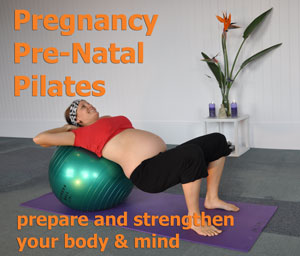Swiss ball training during pregnancy
reduces the risk of low back pain
 Latest evidence: Pregnancy-related lower back pain is one of the most commonly reported complaints among pregnant women. This review examines whether swiss ball core stability training can reduce back-pain.
Latest evidence: Pregnancy-related lower back pain is one of the most commonly reported complaints among pregnant women. This review examines whether swiss ball core stability training can reduce back-pain.
Title: Effects of a stability ball exercise programme on low back pain and daily life interference during pregnancy
Authors: Yan C-F, Hung Y-C, Gau M-L, Lin K-C.
Journal: Midwifery Date: 2014
Why they did it?
Pregnancy-related low back pain (PR-LBP) is one of the most commonly reported complaints among pregnant women and has been shown to effect between 50-70% of all pregnant women. Almost all suffers of PR-LBP experience daily discomfort, and consequently struggle with housework, job performance and childbearing. Common strategies to reduce PR-LBP include, rest, heat application, pain medication, acupuncture, massage and participation in light exercise programs (water gymnastics). The use of specific exercises to increase the stability and strength of lumbar spine and the pelvic girdle has been used to treat PR-LBP. Such exercises are broadly defined as ‘core stability training’ and are used to improve the strength and function of muscles of the abdominal and lower back region (e.g. transversus abdominis, internal and external obliques, and erector spinae). Traditionally core stability exercise has been performed on the floor or ridged benches. More recently the use of ‘unstable training environments’, such as Swiss balls, has reportedly enhanced training effects through increased activation of stabilisers and core muscles. To date, the effects of Swiss ball core stability training on pregnant women suffering PR-LBP has not been examined through research.
How they did it?
In this experimental study, 89 pregnant women (between 22–24 weeks of gestation) participated: 44 in the experimental group and 45 in the control group. All participants had at least minimal low back pain, no prior history of chronic low back pain before pregnancy, and no indications of preterm labour. The experimental group participated in a 12-week Swiss ball program, performed at least three times per week. Exercise sessions were conducted by fitness professionals and lasted from 25 to 30 minutes. A range of exercises were performed on a Swiss ball including pelvic circling and rocking, wall squats and bridges (see web-link for a complete list of exercises). The control group were not provided with any intervention during the study period. Lower back pain in both groups was assessed using a validated questionnaire called ‘The Brief Pain Inventory–Short Form’ which was completed at five time-points, (1) pre- intervention, (2) 4-weeks, (3) 6-weeks, (4) 8-weeks, and (5) post-intervention. This survey instrument assessed two constructs; the ratings of 1) low back pain and 2) daily life interference.
What they found?
At the beginning of the study there was no difference between the groups for incidence of low back pain, daily life  interference, age, height or weight. As hypothesised, when compared to the control group, over the course of the 12-week period the experimental group reported less lower back pain and daily life interference scores. Interestingly, these results followed a ‘linear trend’, which showed that the Swiss ball exercises progressively reduced perceptions of lower-back pain from weeks 4-12.
interference, age, height or weight. As hypothesised, when compared to the control group, over the course of the 12-week period the experimental group reported less lower back pain and daily life interference scores. Interestingly, these results followed a ‘linear trend’, which showed that the Swiss ball exercises progressively reduced perceptions of lower-back pain from weeks 4-12.
Ok, what does this mean to me?
Given that most pregnant women will experience PR-LBP, core stability training on a Swiss ball may be used for pregnant clients as either preventive measure or to manage this common health issue. As always, if you have a pregnant client, make sure you seek guidance from their GP or obstetrician before developing an exercise program.
